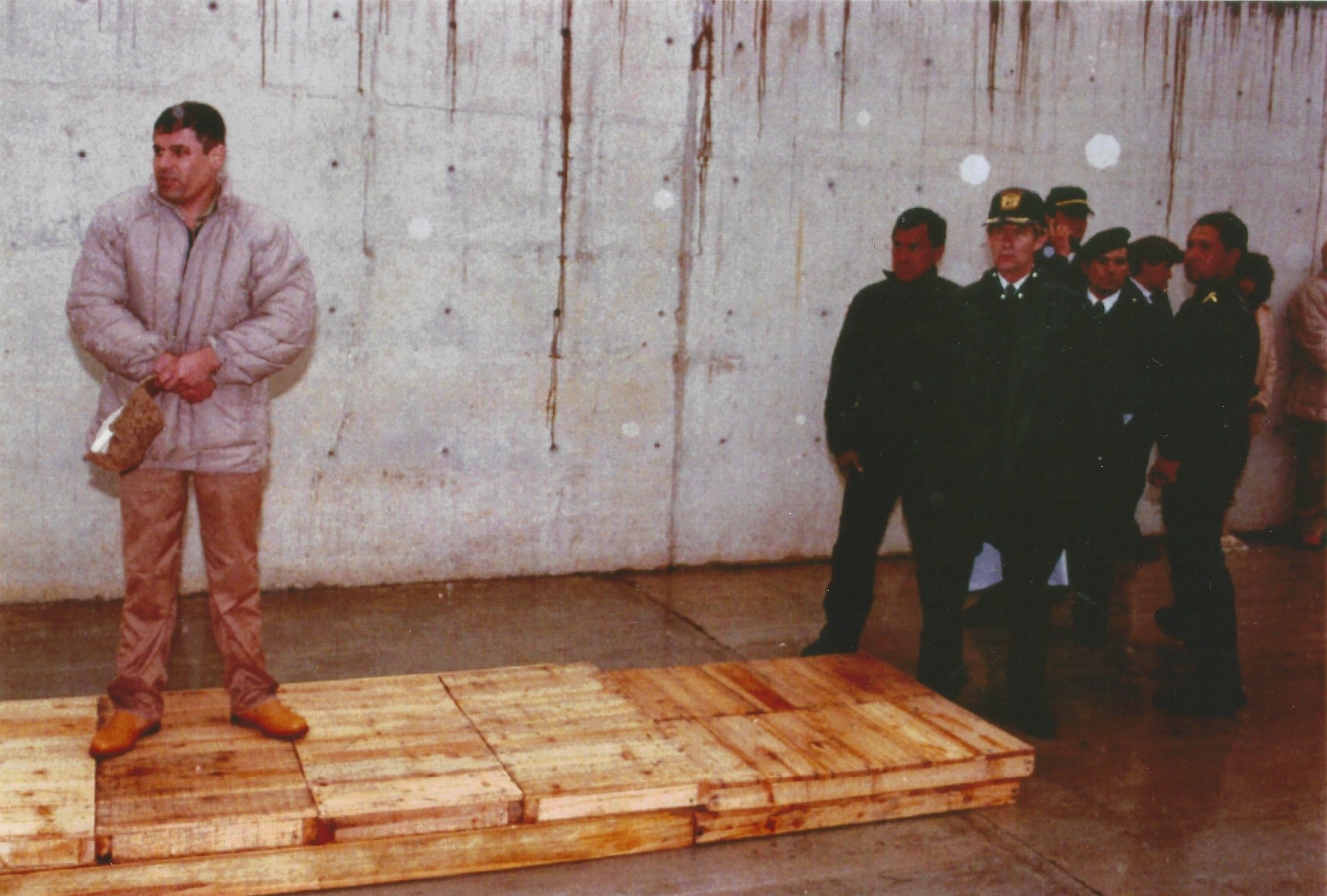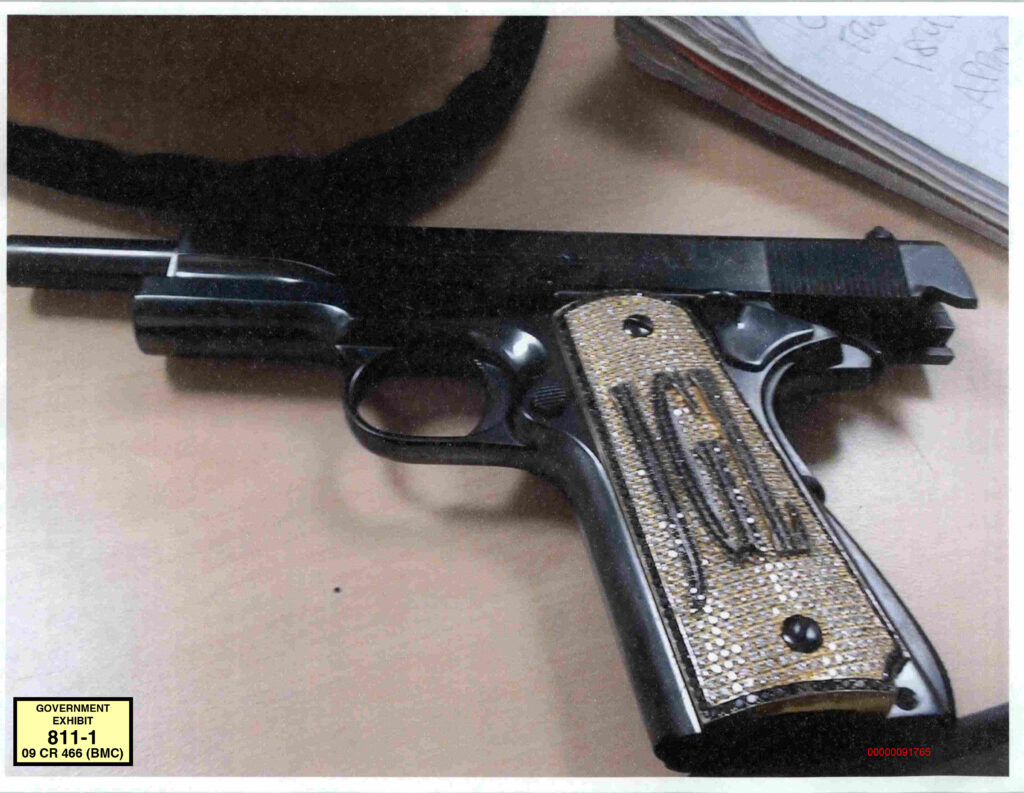The airport shootout and El Chapo’s big arrest
Mexican drug lord Joaquin Guzman Loera was captured 30 years ago this month

Today, his nickname is universally recognized. It’s a moniker virtually synonymous with contemporary narcotrafficking. But 30 years ago, few outside of regional underworld circles had ever heard of El Chapo. The man called “Shorty” wouldn’t gain global infamy until a series of uncanny events unfolded in the new millennium.
Born in 1957 in rural La Tuna, Badiraguato, in the Mexican state of Sinaloa, Joaquin Guzman Loera’s path to criminal power bore characteristics similar to those of other 20th century gangsters. He came from humble beginnings, which included early exposure to criminality, unstable economy, unreliable and/or corrupt government, etc.
As an adult during the 1980s and early ’90s, El Chapo was busy making moves within Mexico’s ever-shifting drug underworld. Perhaps one of the most important events that inadvertently paved the way for his ascension was the murder of DEA agent Enrique “Kiki” Camarena in 1985. The subsequent breakup of the Guadalajara Cartel, the criminal organization held responsible for the agent’s death, as a result of American law enforcement’s payback and the mounting pressure on Mexico’s government to crack down, created a power vacuum. Power struggles ensued. By 1989, with a few of the top narcos incarcerated (including Ernesto Fonseca, Miguel Angel Felix Gallardo and Rafael Caro Quintero), some killed and others on the lam, the remaining drug traffickers splintered and restructured.
Empire building and tunnel digging
Guzman was one of several individuals to take the reins of what would come to be known as the Sinaloa Cartel. “To be like Chapo,” says former cartel enforcer and debt collector Jose Martinez, aka El Mano Negra, “You have to grow up with big drug dealers, big drug lords.”
Martinez, who is currently incarcerated in a U.S. federal prison, confessed in 2013 to dozens of homicides over the span of 30-plus years, most of which were cartel-sanctioned assassinations. He claims to have met El Chapo on at least one occasion in 1991, in a most unexpected place – California’s Central Valley, where Martinez lived at the time. He says El Chapo is among an elite few who have risen to such prominence within the drug underworld, and although many aspire to that level, it’s not easy to get there. “Not because you sell a hundred kilos a month can you be like him, hell no.” Martinez credits El Chapo’s tenacity and networking skills. “He went to Central America and talked with [Pablo] Escobar, and all that. That’s why he became who he became.”
El Chapo also was innovative. Using tunnels to smuggle drugs wasn’t something he invented; for decades, smugglers of all sorts have used tunnels to move illicit goods. But what authorities found on May 17, 1990, represented a highly advanced level of tunnel tech. The discovery of a tunnel crossing from Mexico into Arizona left agents in sheer awe. The passageway in Douglas Arizona, hidden in a warehouse’s “false” drain, extended 300 feet and was equipped with lighting, rail and ventilation. The starting point was a house in Agua Prieta. The little house used an even more clandestine system to hide its tunnel entry point. The entrance was hidden beneath a pool table atop a concrete slab, which opened by a hydraulic system – activated by turning a water spigot outside. The tunnel was constructed in 1989 and considered the first elaborate and expensive cross-border underground endeavor credited to El Chapo. This new method of architectural marvel would be adopted by other drug cartels as well, but as history shows us, for Chapo, tunnels became perhaps the most valuable of all his available tools for drug smuggling.
Collateral damage
One of the Sinaloan’s arch rivals at the time was the Arellano-Felix organization, based in Tijuana – another crucial geographic smuggling location. The two groups played a violent game of eye for an eye in the early ’90s until a particularly fateful incident occurred in the parking lot of Guadalajara’s Miguel Hidalgo y Costilla Airport on May 24, 1993, that left several people dead, a Catholic bishop among them. The shootout thrust both cartels and their leaders into the headlines in Mexico and beyond.

What actually transpired that day is still debated, but the official story says gunmen (some recruited from a subset of San Diego’s Logan Heights street gang) hired by the Arellano-Felix organization were tasked with killing El Chapo, whom they knew would be at the Guadalajara airport. The assassins spotted a vehicle they believed was Guzman’s – a white Grand Marquis – and opened fire. Inside the car was Cardinal Juan Jesús Posadas Ocampo, dressed in full clerical garb, and a driver. Ocampo was riddled by 14 bullets at close range; his driver was hit 11 times.

El Chapo and his entourage were in their car nearby when one of the bodyguards saw the gunmen. Guzman apparently fled the melee unscathed. Before the hit squad made its quick exit, seven people were left dead. Afterward, an official from Guadalajara’s office of attorney general stated that 20 gunmen were involved, two suspects were captured and a total of 26 rounds hit Ocampo’s vehicle and another 20 rounds hit a nearby vehicle. The Catholic Church wasn’t exactly buying the official version at face value, and controversy still surrounds the murder (Ocampo spoke out against narcos and government collusion). But again, officially, authorities maintained the death was a result of mistaken identity and the violence was driven by the rivalry between the Tijuana-based Arellano-Felix family and the Sinaloan faction led by El Chapo and Ismael “El Mayo” Zambada.
Wanted man
Mexico issued a reward of 15 million pesos for the capture of Benjamin and Javier Arellano-Felix, Joaquin “El Chapo” Guzman and Hector Luis Palma. El Chapo had quickly made his way to Guatemala where he operated under the alias Jose Luis Ramirez. The murder of Cardinal Ocampo and the subsequent manhunt is what propelled El Chapo onto the world stage for the first time, but he wasn’t an entirely unknown figure either. Law enforcement agencies from the U.S., Mexico and Central America had been piecing together the puzzle of his role and control of major drug shipments (for example, El Chapo was secretly photographed by El Salvadoran agents at a bar in San Salvador in April).

The Salvadoran authorities planned to capture El Chapo but Guatemala got to him first. El Chapo, his alleged lover María del Rocío del Villar Becerra, and four other companions were detained near the Mexican border on June 9, 1993. He was swiftly handed over to Mexican authorities and taken to Almoloya “Altiplano” prison, about 50 miles east of Mexico City, where the prisoners were showcased for the news media.
During interrogation, El Chapo admitted to being at the airport when the gunfire broke out and claimed to have seen one or more of the Arellano-Felix members at the scene. He also told investigators that he escaped from the shooting in a taxi, and a few days thereafter drove himself to the Mexican region bordering Guatemala.
On June 10, Chapo, adorned in prison fatigues, stood in a drizzling rain as reporters called out questions. “No, señor,” Guzman replied to the narco accusation. “Yo soy agricultor.” His responses were all brief, denying ever using weapons and insisting he farmed corn and beans. Later in the month, authorities in El Salvador busted a large cocaine shipment and arrested several of El Chapo’s associates, further connecting the dots of the drug lord’s empire.
Prison life and escape
El Chapo was transferred to Puente Grande prison in November 1995. Some accounts describe his prison life as nothing less than extravagant. According to Mexican journalist Anabel Hernandez, in her book Emma and the Other Narco Women, El Chapo and Hector Luis Palma Salazar engaged in sexual exploits with “prostitutes from outside, and when that was not possible they paid nurses, cleaners and cooks who worked in the penal system.” She also writes about their dining on expensive takeout meals and receiving shipments of Viagra. Chapo’s hedonistic prison lifestyle, she wrote, was enabled by bribes and funded by regular shipments of cash from his cousin, another formidable drug lord – Arturo Beltran Leyva.
The party was about to end, though, in 2001. El Chapo’s first plans of escape were prompted by one word – extradition. Once he learned an agreement between Mexico and the United States was imminent, his plot went into action. On January 19, 2001, he either rolled out or walked out (depending on who’s telling the story) of Puente Grande prison and remained on the lam for more than a decade.
Folk hero

Still, El Chapo was not a widely recognized name. When and how did he become a cultural phenomenon? Douglas Century, co-author of Hunting El Chapo, says everything changed in 2009. “One of the crucial things to making him a folk hero, larger-than-life figure, was the Forbes list ranking.” Century is referring to March 2009 issue of Forbes when it listed El Chapo number 701 (at $1 billion) on the richest people list. He was again featured in November at number 41 on the list of “World’s Most Powerful People.” The magazine was criticized both domestically and abroad for including El Chapo, but it certainly wasn’t the first time the publication had named a kingpin on one of its lists (Pablo Escobar is a prime example). ”That became well known slang in Mexico,” Century says of the ranking number. “‘To this day if you see people posting on social media ‘701,’ or anything with those numbers, they’re shouting out Chapo by his Forbes ranking.”
El Chapo was recaptured in 2014 and housed in the first prison he spent time in – Altiplano. Again he wasted no time in plotting an escape. A massive feat of engineering created the tunnel of all tunnels. It led directly from the floor of the shower of his prison cell below ground to a house under construction near the prison. He was free for six months and ultimately came face to face again with his biggest fear – extradition. El Chapo was extradited to the United States in 2017, and he was convicted in federal court in New York in 2019. He is serving a life sentence in ADX Florence, the supermax prison 113 miles south of Denver.
Christian Cipollini is the author of Murder Inc.: Mysteries of the Mob’s Most Deadly Hit Squad and LUCKY, a gangster graphic novel.
Feedback or questions? Email blog@themobmuseum.org





